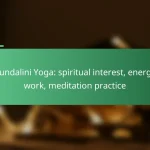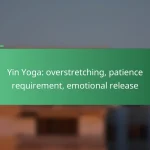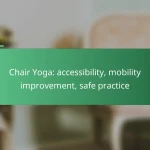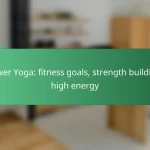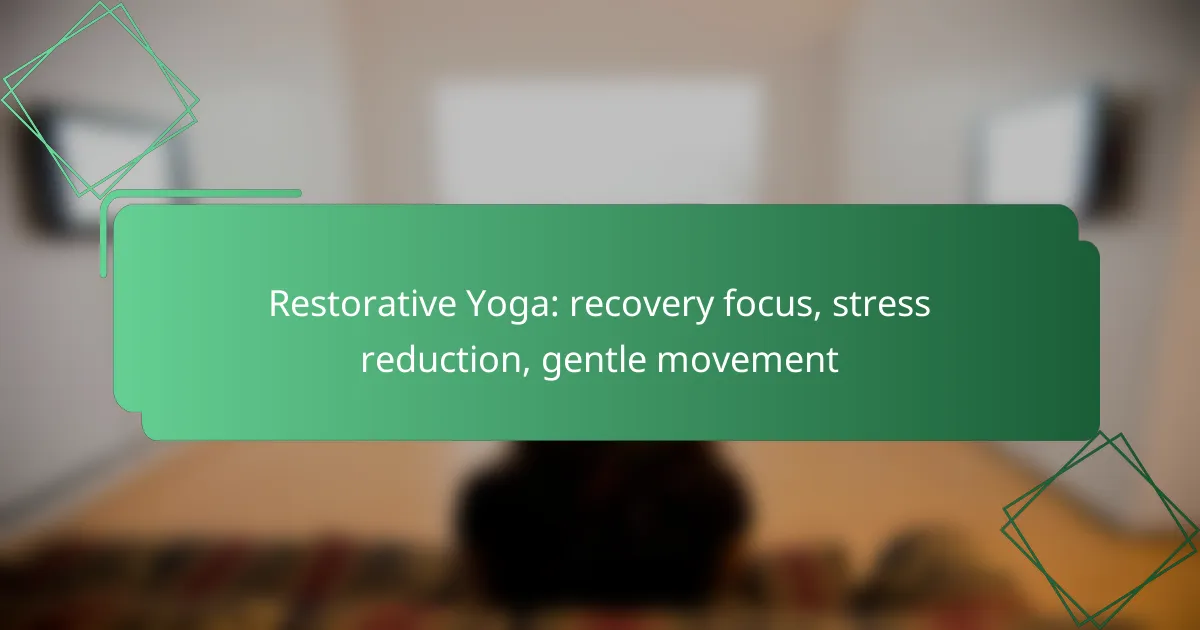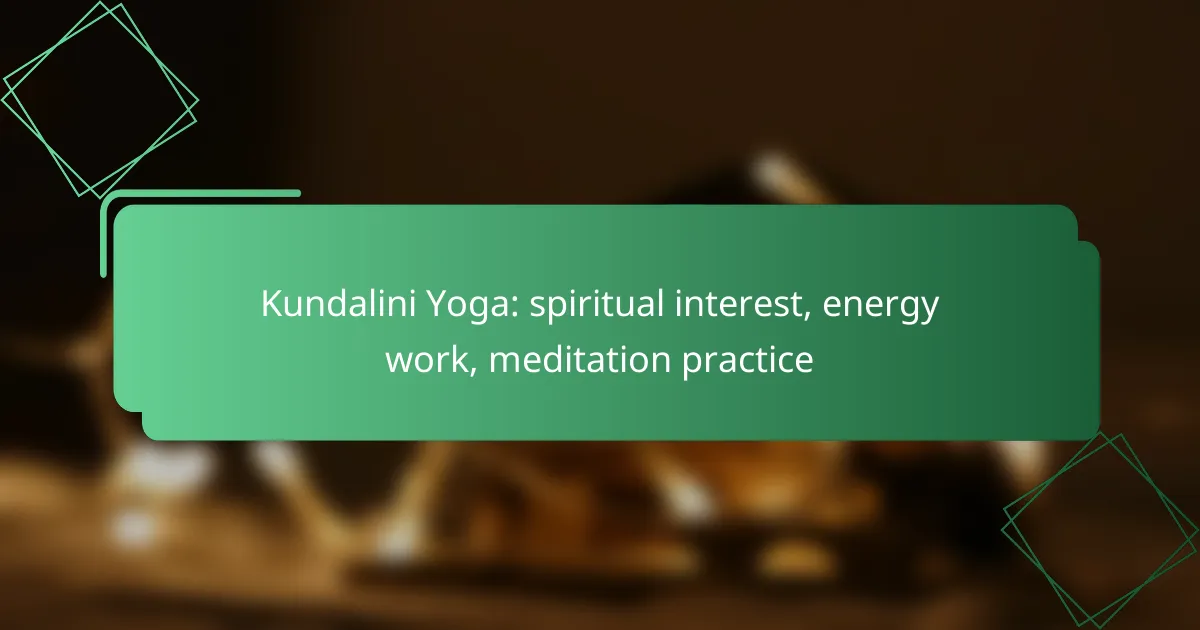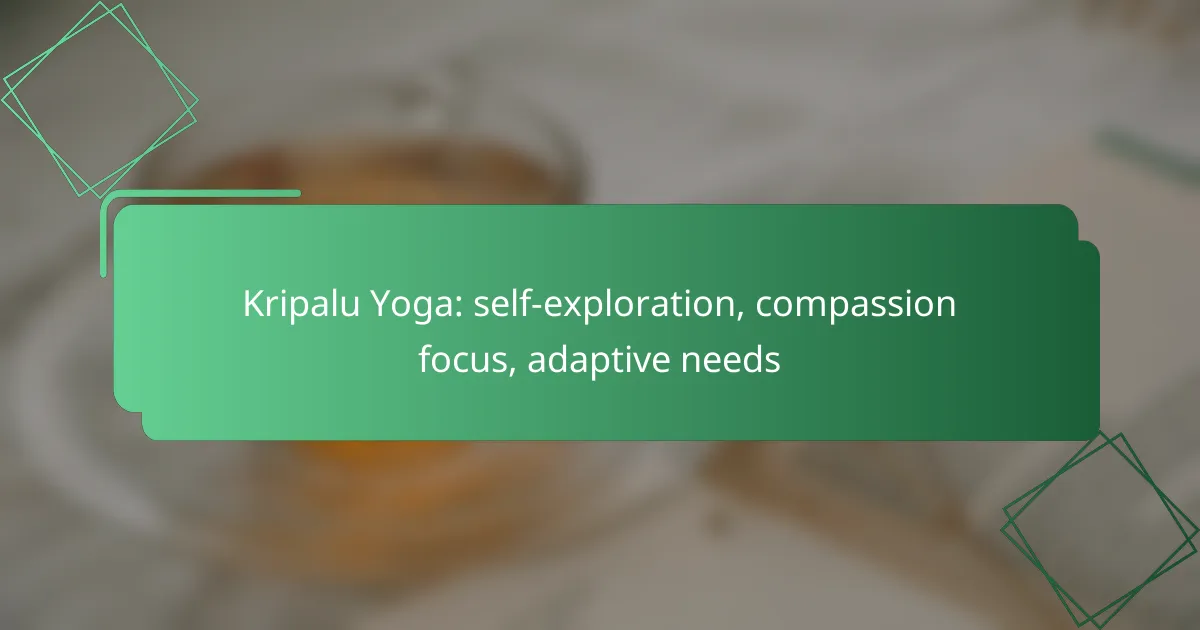Restorative yoga is an effective practice that emphasizes deep relaxation and gentle movement, making it ideal for those seeking recovery from stress and physical tension. By fostering a sense of balance in both body and mind, this approach not only aids in relaxation but also enhances overall well-being. Beginners can easily access restorative yoga through local classes or online resources, allowing them to incorporate these beneficial techniques into their lives.
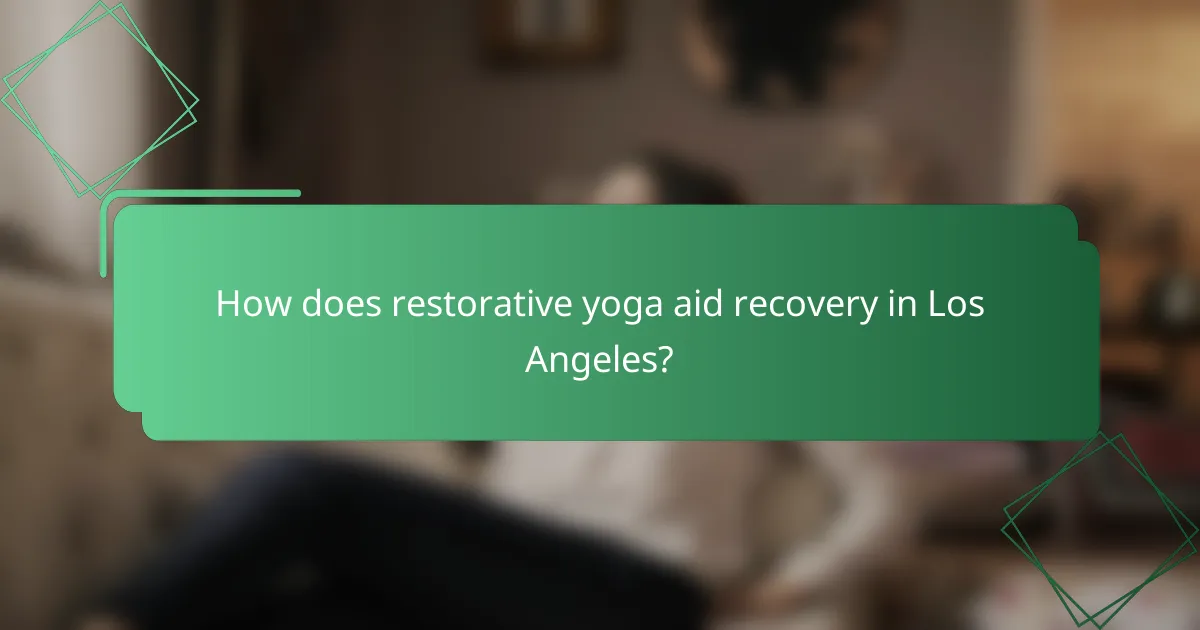
How does restorative yoga aid recovery in Los Angeles?
Restorative yoga supports recovery by promoting deep relaxation and gentle movement, which can be particularly beneficial for those in Los Angeles dealing with stress and physical tension. This practice helps individuals restore balance in both body and mind, making it an effective tool for recovery and overall well-being.
Promotes muscle relaxation
Restorative yoga encourages muscle relaxation through prolonged poses that gently stretch and release tension. By using props such as blankets and bolsters, practitioners can support their bodies, allowing for deeper relaxation without strain. This method can be especially useful for those recovering from injuries or experiencing chronic pain.
In Los Angeles, many studios offer classes specifically focused on muscle relaxation techniques, which can help participants learn how to effectively use props and breath to enhance their practice. Regular participation can lead to increased flexibility and reduced muscle tightness over time.
Enhances mental clarity
Engaging in restorative yoga can significantly enhance mental clarity by calming the mind and reducing stress. The practice encourages mindfulness and present-moment awareness, which can help clear mental fog and improve focus. This is particularly relevant in a bustling city like Los Angeles, where distractions can easily overwhelm the mind.
Incorporating breathwork and meditation into restorative sessions can further sharpen mental acuity. Practitioners often report feeling more centered and able to tackle daily challenges with a clearer perspective after their sessions.
Reduces inflammation
Restorative yoga may help reduce inflammation by promoting relaxation and improving circulation. Gentle movements and deep breathing can enhance blood flow, which supports the body’s natural healing processes. This is particularly beneficial for individuals dealing with inflammatory conditions or recovering from physical exertion.
In Los Angeles, where outdoor activities are popular, restorative yoga can serve as a complementary practice to more vigorous workouts, aiding recovery and reducing the risk of injury. Regular practice can lead to a noticeable decrease in inflammation-related discomfort.
Improves sleep quality
Practicing restorative yoga can significantly improve sleep quality by calming the nervous system and preparing the body for rest. The slow, mindful movements and focus on breath help to alleviate stress, making it easier to fall asleep and stay asleep. This is crucial for many residents in Los Angeles, where busy lifestyles can disrupt sleep patterns.
To maximize the benefits for sleep, consider incorporating restorative yoga into your evening routine. Simple poses such as supported child’s pose or legs-up-the-wall can promote relaxation and signal to your body that it’s time to wind down, leading to more restful nights.

What are the best restorative yoga poses for stress reduction?
The best restorative yoga poses for stress reduction focus on gentle movements that promote relaxation and recovery. These poses help calm the mind, reduce tension in the body, and enhance overall well-being.
Supported Child’s Pose
Supported Child’s Pose is a gentle, restorative position that encourages deep relaxation. By using props like blankets or bolsters, you can create a comfortable space that allows your body to release tension while promoting a sense of safety.
To practice this pose, kneel on the floor, sit back on your heels, and stretch your arms forward or rest them alongside your body. Ensure that your forehead is supported by a bolster or blanket to enhance comfort and relaxation.
Stay in this pose for several minutes, focusing on your breath and allowing your body to sink deeper into the support. Avoid straining your neck or back; adjust the props as needed to maintain comfort.
Reclining Bound Angle Pose
Reclining Bound Angle Pose is excellent for opening the hips and promoting relaxation. This pose involves lying on your back with the soles of your feet together and your knees gently falling outward, supported by props if necessary.
To perform this pose, lie on your back, bring the soles of your feet together, and let your knees drop to the sides. You can place cushions or blocks under your knees for additional support. This position encourages a gentle stretch while allowing your body to relax fully.
Hold this pose for several minutes, focusing on your breath. Ensure that your lower back remains comfortable and adjust the position of your legs if you feel any strain.
Legs-Up-The-Wall Pose
Legs-Up-The-Wall Pose is a restorative pose that promotes circulation and relaxation. By elevating your legs against a wall, you can relieve tension in the lower body and calm the nervous system.
To practice this pose, sit next to a wall and lie back, swinging your legs up onto the wall. Your body should form an L-shape, with your back flat on the ground and your legs extended vertically. Use a folded blanket under your hips for added comfort.
Stay in this position for 5 to 15 minutes, focusing on your breath and allowing your body to relax. Avoid any discomfort in your lower back; if needed, adjust your distance from the wall or the height of your hips.
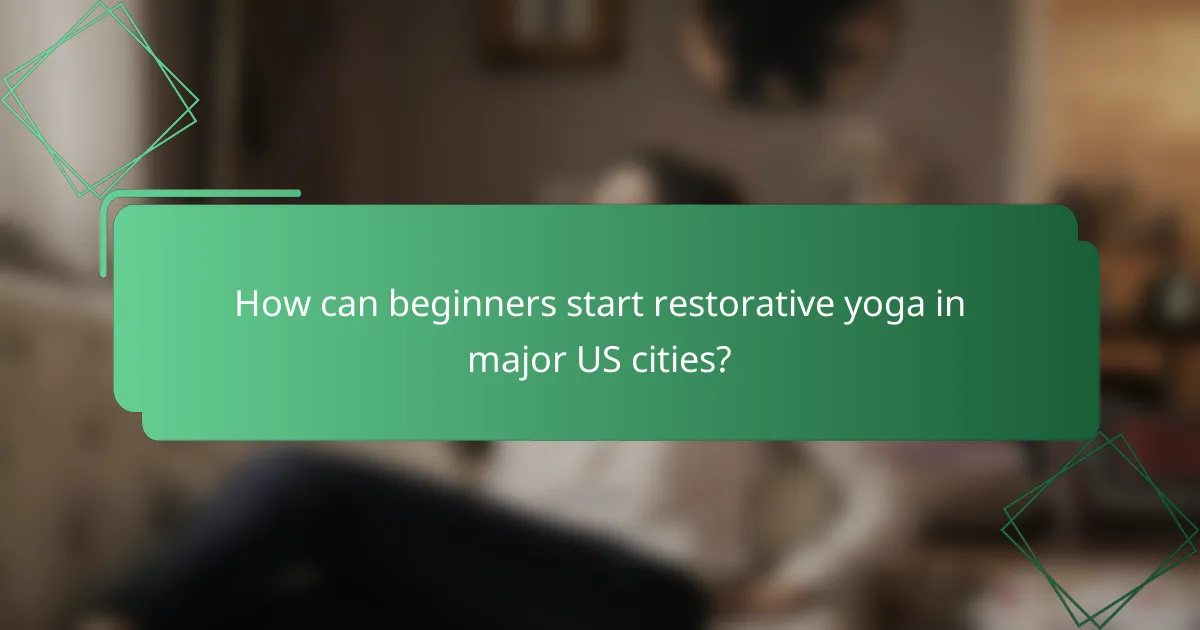
How can beginners start restorative yoga in major US cities?
Beginners can start restorative yoga in major US cities by seeking local classes, utilizing online resources, and investing in quality props. These approaches provide accessible options for learning and practicing restorative techniques that promote recovery and stress reduction.
Join local classes
Finding local restorative yoga classes is a great way to begin your practice. Many major US cities have studios that offer specialized classes focusing on gentle movement and relaxation techniques. Check community centers, yoga studios, or wellness facilities for schedules and beginner-friendly options.
When selecting a class, look for instructors who emphasize restorative practices and have experience working with beginners. Consider attending a few different classes to find a style and teacher that resonate with you.
Utilize online resources
Online resources can be invaluable for beginners looking to start restorative yoga. Many platforms offer free or subscription-based classes that you can follow at home, allowing you to practice at your own pace. Websites and apps like YouTube, YogaGlo, or Alo Moves provide a range of restorative yoga sessions tailored for various skill levels.
Additionally, consider joining online communities or forums where you can ask questions, share experiences, and receive support from fellow practitioners. This can enhance your learning and motivation as you embark on your restorative yoga journey.
Invest in quality props
Quality props are essential for a successful restorative yoga practice, as they help support the body in various poses. Beginners should consider investing in items such as bolsters, blankets, blocks, and straps. These tools can enhance comfort and stability during practice, allowing for deeper relaxation.
When purchasing props, look for durable materials that provide adequate support. Many yoga studios sell props, or you can find them at local fitness stores or online retailers. Aim for a few key items to start, and gradually expand your collection as you become more familiar with your practice.
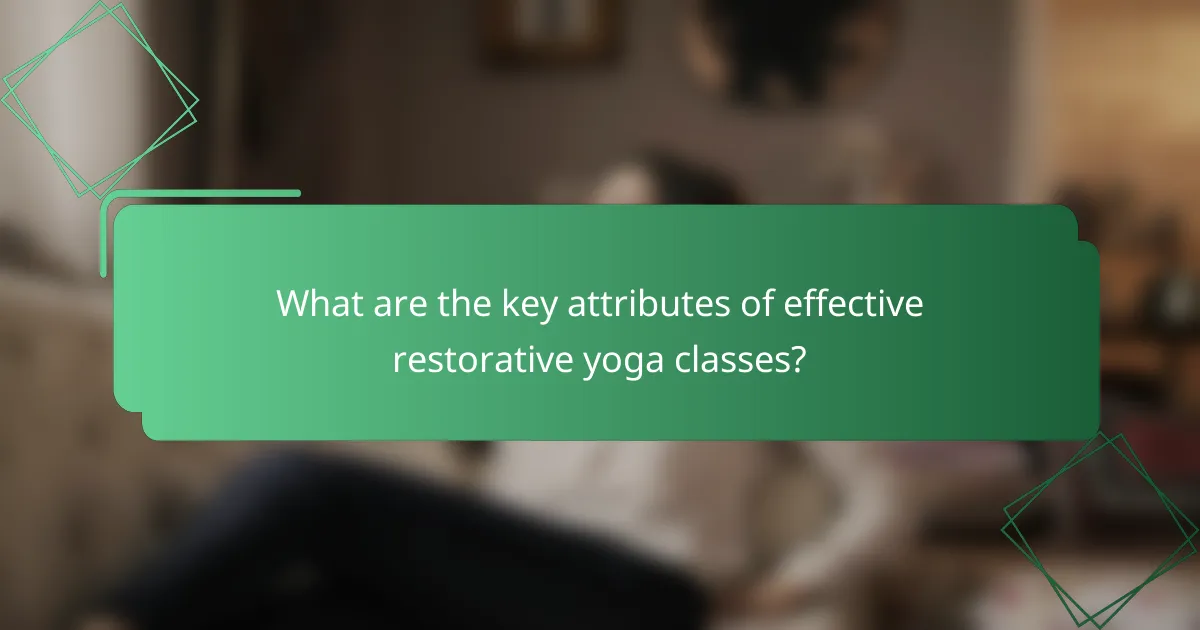
What are the key attributes of effective restorative yoga classes?
Effective restorative yoga classes are characterized by qualified instructors, a comfortable environment, and accessible class times. These attributes ensure that participants can fully engage in recovery-focused practices that promote stress reduction and gentle movement.
Qualified instructors
Having qualified instructors is essential for effective restorative yoga classes. Instructors should possess certifications in yoga and experience in restorative practices, enabling them to guide participants safely and effectively. Look for instructors who are knowledgeable about anatomy and can provide modifications for various skill levels.
Additionally, instructors should create a supportive atmosphere, encouraging students to listen to their bodies and prioritize their comfort. This guidance is crucial for maximizing the benefits of restorative yoga, which relies on relaxation and mindfulness.
Comfortable environment
A comfortable environment is vital for restorative yoga, as it helps participants relax and focus on their practice. Classes should be held in spaces that are quiet, well-ventilated, and free from distractions. Soft lighting and calming decor can enhance the overall experience.
Consider the temperature of the room as well; it should be warm enough to allow for relaxation without causing discomfort. Providing props like bolsters, blankets, and straps can further enhance comfort, allowing participants to find their ideal resting positions.
Accessible class times
Accessible class times are important for attracting a diverse group of participants. Classes should be scheduled at various times throughout the week, including evenings and weekends, to accommodate different lifestyles. This flexibility allows more people to participate in restorative yoga, promoting overall well-being.
Additionally, consider offering online options or recorded sessions for those who cannot attend in person. This accessibility can help individuals integrate restorative yoga into their routines, making it easier to prioritize recovery and stress reduction.

How does restorative yoga compare to other yoga styles?
Restorative yoga is distinct from other yoga styles due to its emphasis on recovery, stress reduction, and gentle movement. Unlike more vigorous forms, restorative yoga prioritizes relaxation and healing, making it suitable for individuals seeking a calming practice.
Less physically demanding
Restorative yoga is significantly less physically demanding than styles like vinyasa or power yoga. It involves minimal movement and often uses props such as blankets, bolsters, and blocks to support the body in restful poses. This makes it accessible for beginners and those with physical limitations or injuries.
Participants typically hold poses for extended periods, allowing the body to relax deeply without the strain of active engagement. This gentle approach can be particularly beneficial for those recovering from stress or physical exertion.
Focus on relaxation
The primary focus of restorative yoga is relaxation, which sets it apart from more dynamic yoga styles. Each session is designed to activate the parasympathetic nervous system, promoting a state of calm and reducing stress levels. This focus on relaxation can lead to improved mental clarity and emotional balance.
Practitioners are encouraged to breathe deeply and mindfully, enhancing the relaxation response. Techniques such as guided meditation or soothing music may also be incorporated to deepen the experience.
Longer hold times
In restorative yoga, poses are held for longer durations, often ranging from five to twenty minutes. This extended hold time allows for a profound release of tension and encourages the body to enter a state of deep relaxation. It contrasts sharply with other styles that typically involve quicker transitions between poses.
Holding poses for longer periods also provides an opportunity for introspection and mindfulness, fostering a deeper connection between the mind and body. This practice can be particularly effective for individuals looking to cultivate patience and presence in their yoga journey.
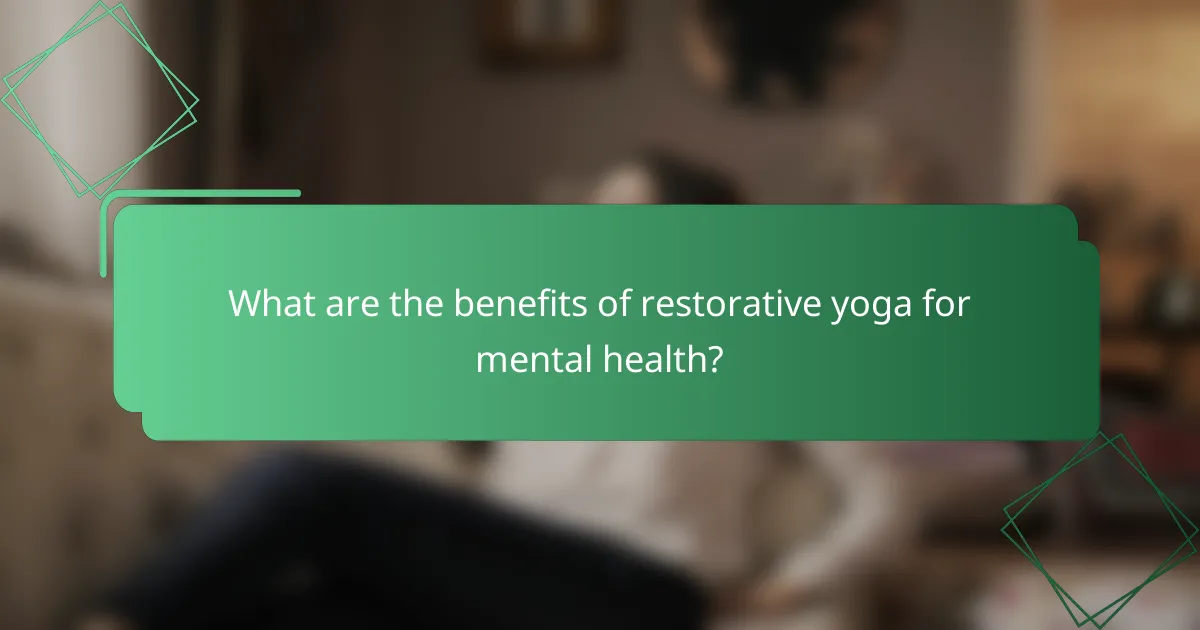
What are the benefits of restorative yoga for mental health?
Restorative yoga offers significant benefits for mental health by promoting relaxation and reducing stress. This gentle practice encourages mindfulness and helps individuals reconnect with their bodies, leading to improved emotional well-being.
Stress reduction
Restorative yoga is particularly effective for stress reduction as it activates the body’s relaxation response. By using props to support the body in various poses, practitioners can hold these positions for extended periods, allowing for deep relaxation and a decrease in cortisol levels.
Incorporating restorative yoga into a weekly routine can lead to noticeable improvements in stress management. Even short sessions, lasting around 20 to 30 minutes, can provide substantial relief, making it a practical option for busy individuals.
Recovery focus
This yoga style emphasizes recovery by allowing the body to heal and rejuvenate. It is beneficial for those recovering from physical injuries or mental fatigue, as it encourages gentle movement without strain.
Practicing restorative yoga can enhance the recovery process by improving circulation and promoting better sleep. Aim for sessions that include poses like supported child’s pose or legs-up-the-wall, which can be particularly restorative.
Gentle movement
Restorative yoga involves gentle movements that are accessible to practitioners of all levels. The focus is on slow, mindful transitions between poses, which helps to cultivate body awareness and reduce tension.
To practice gentle movement effectively, consider incorporating breathwork with each pose. This combination not only enhances the physical benefits but also fosters a deeper connection to mental and emotional states, making it a holistic approach to wellness.

